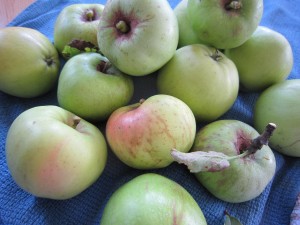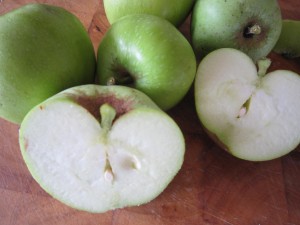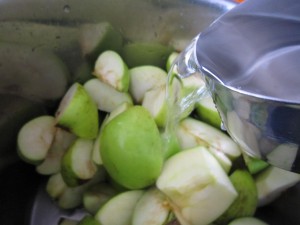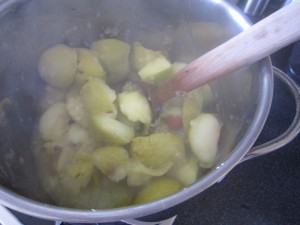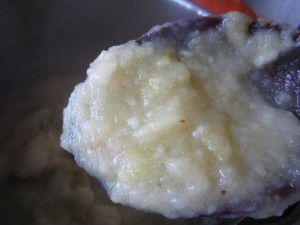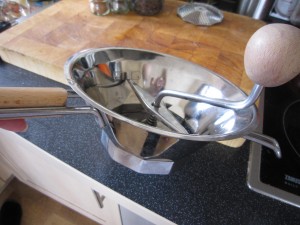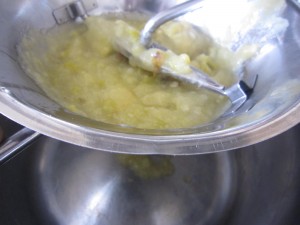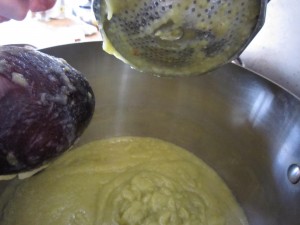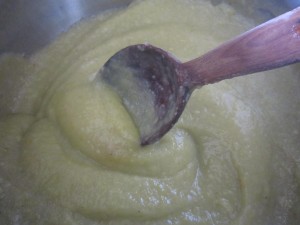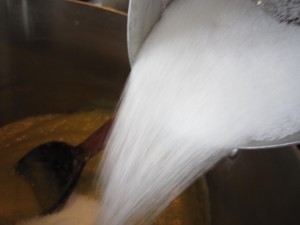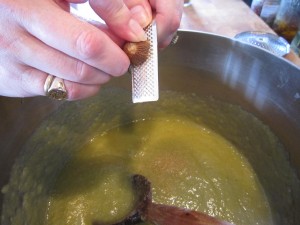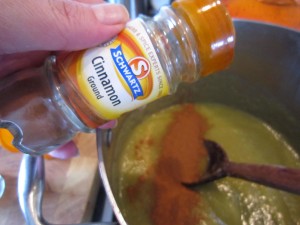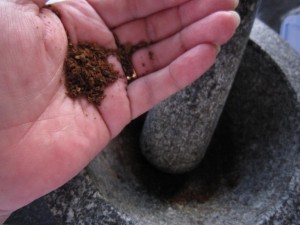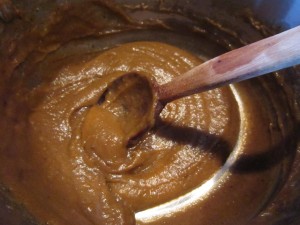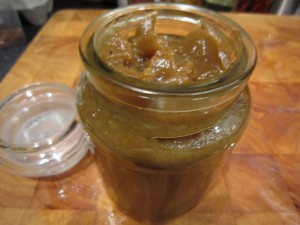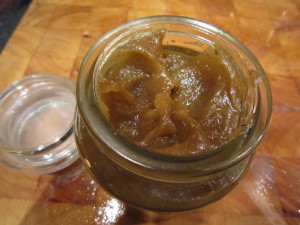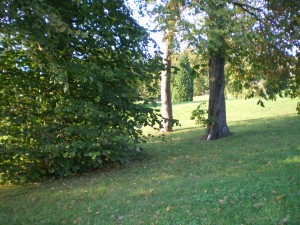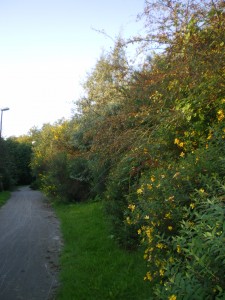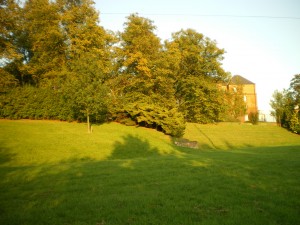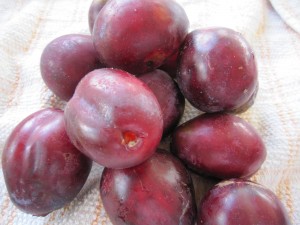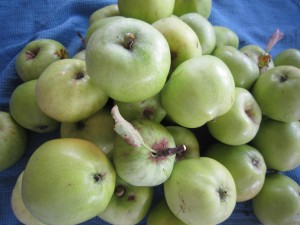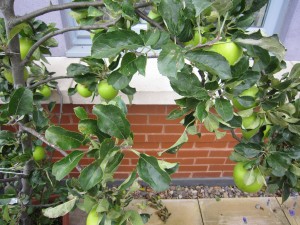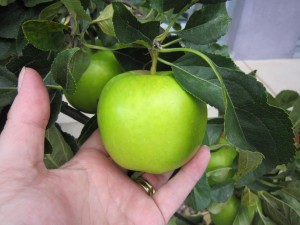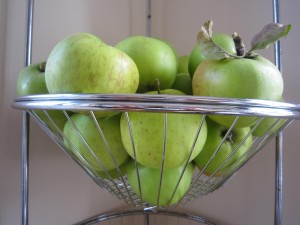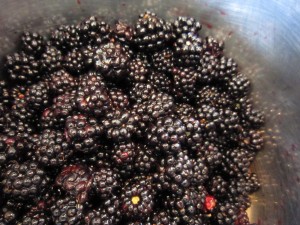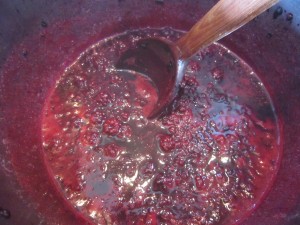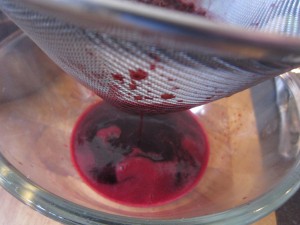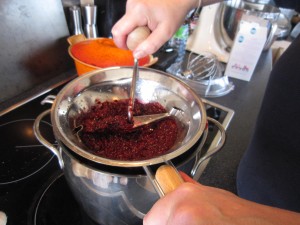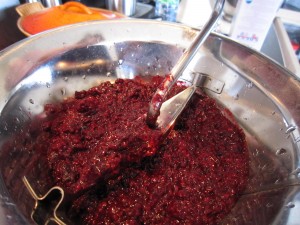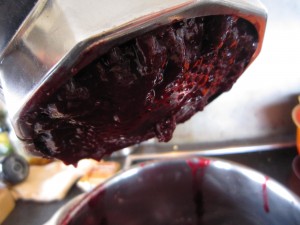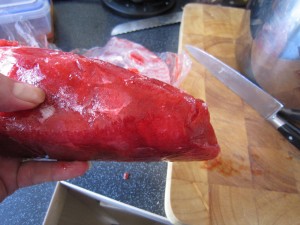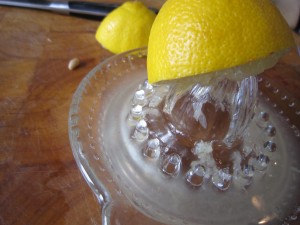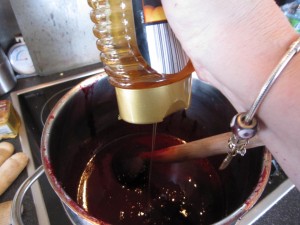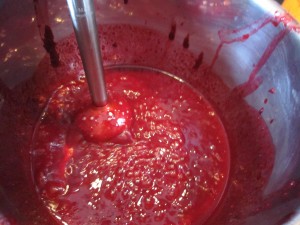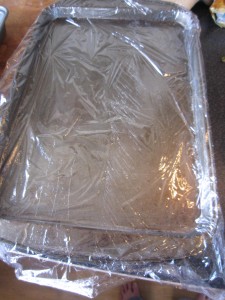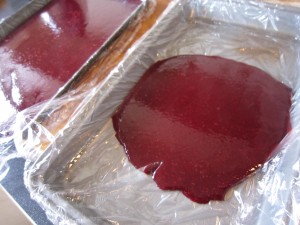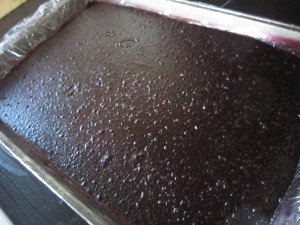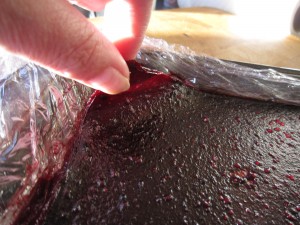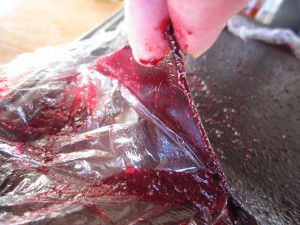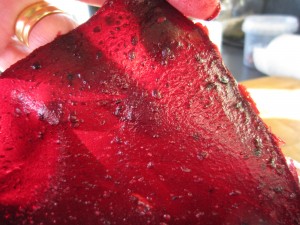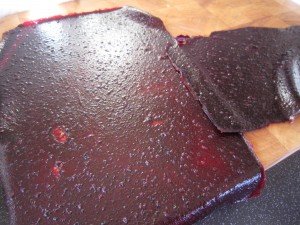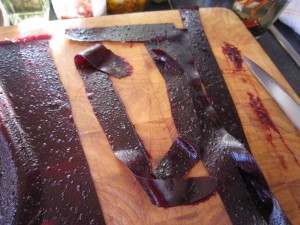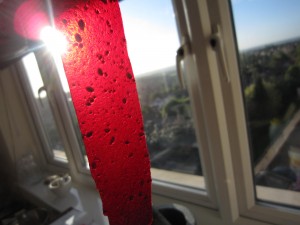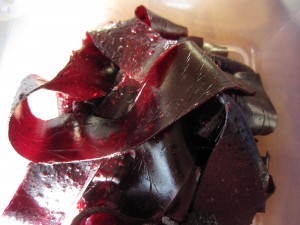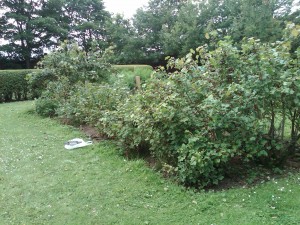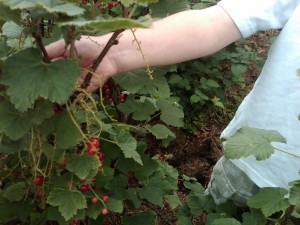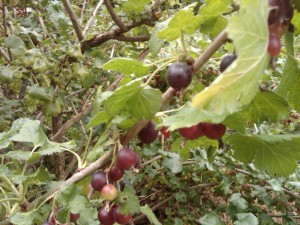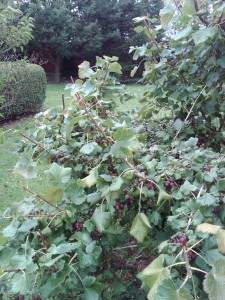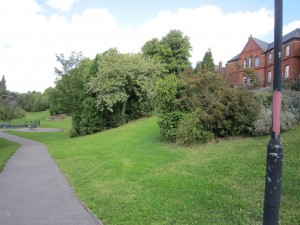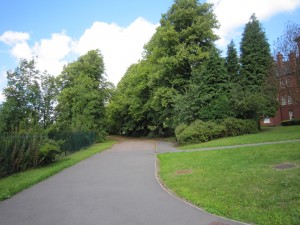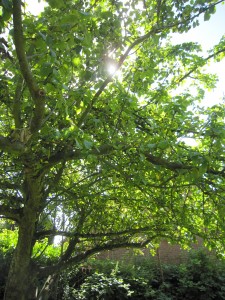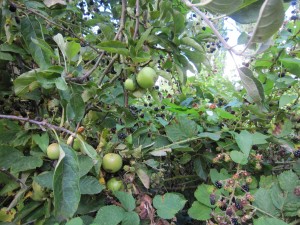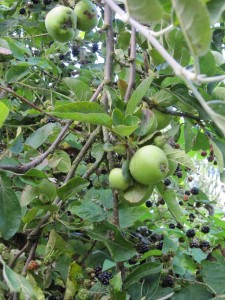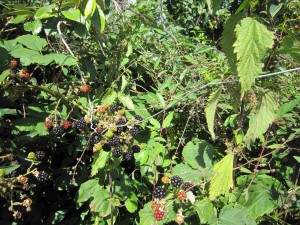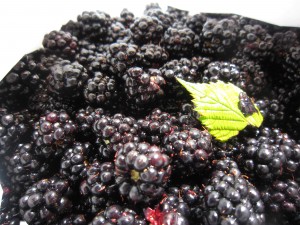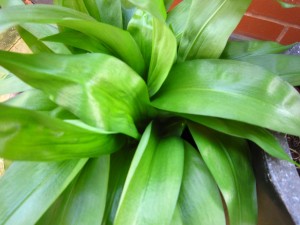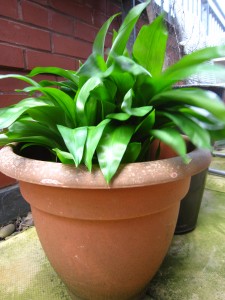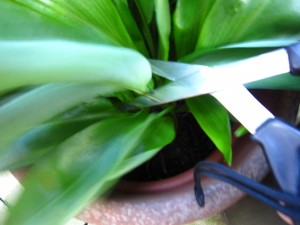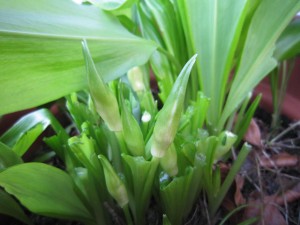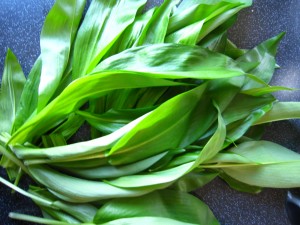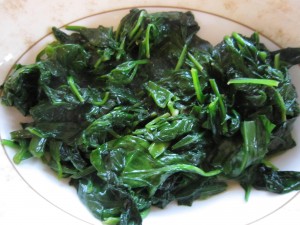This autumn (and I know it is still late summer really, but it is the 1st September and it was misty when I got up and it is just starting to feel autumnal) well, this autumn the apple crops are amazing. Every apple tree seems to be laden with fruit. Friends who drove up to see us, last weekend, said the roads from Oxfordshire were being pelted with fruit as they passed. So many apples, and all of them so ripe they just fell from the trees with the faintest encouragement or vibration from passing traffic. I often wonder about the roadside apple trees… are they successful seedlings, all grown up from a thrown away apple core as people went past, or are they the remnants of a long ago cottage garden by the road? I think they are, perhaps, from cores as the trees are so tall and straight. Any old apple tree in a garden tends to be gnarled and battered. It’s nice to think of nature triumphing from a discarded core, isn’t it?
But there’s so many of them! And no one is doing anything with them. What a waste! Mind you, it’s thinking of things to do with this huge crop……
Today’s apples, I decided, were going to be made into apple butter.
I’d read about this for years but not really explored what it was. I had a half notion it was apples and butter (which sound rather nice, actually) but when I started searching, I discovered that it was just apples, spices and a little bit of sugar, boiled down and thickened during the long slow cooking to make a preserved apple spread. It spreads, apparently, like butter when it is done, which is how it got its name. Wikipedia explained a bit more, as did Charles, a friend in America, who told me that his father -in- law and the rest of his townsfolk gather to make apple butter in huge quantities in the town square. The smell is amazing, apparently, spreading out from the town square. Historically the idea came from Europe and was taken to America by immigrants and it is mainly in America that it is made now.
Well, it is going to be made in Nottingham today. I have fruit (plenty of fruit) and time to do it. All it takes is apples and spices. Something that we can have on toast, or cook with later in the year when all the apples have either fallen or rotted. Something healthy and tasty. A dairy free spread from free fruit? Sounds good, doesn’t it?
It is simplicity itself. All you have to do is quarter the apples, leaving the skin on and the core in – this will add pectin to the apples and help it set. Only cut out and damaged bits of apple and do remove any spiders or caterpillars that you may have brought home with you.
There were about 3 lbs of apples in my large pan and I poured in a cup of water to help them cook down. In the long slow cooking that follows the water will evaporate. Some recipes says use a cup of cider vinegar as it adds a tang to the end product but I didn’t have any, so water it was.
The apples started to cook very quickly – maybe a couple of minutes and you could see them soften. It is important to keep stirring so they don’t burn.
After about 15 minutes or so, the apples had reduced to a soft mush, like apple sauce.
One of the things I was given from my aunt’s house was a Mouli food mill which is ideal for this next bit.
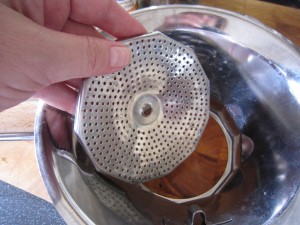
As you have cooked the skin, the core and the pips as well as the apple, you need to get the bits out and just have the smooth cooked apple left to transform into the apple butter. I used the finest plate and started to mill the apple puree.
If you haven’t got a Mouli then you can do this next bit by pushing the fruit through a sieve. The Mouli is quick, though, so it could be a good thing to buy.
You can see how smooth the milled apple is and all the hard bits are left behind.
A beautiful, smooth apple puree.
I tasted the apple and it was sweetly appleish but quite sharp so 1 cup of sugar was added and stirred in.
The next part was to add the spices…. most of the recipes I looked at suggested nutmeg so I added half a teaspoon or so into the mix (thanks, Bear for taking the photo)
And all recipes said to add my favourite spice cinnamon – 1 whole teaspoon.
A pinch of ground cloves (yes, you can buy it ground but I couldn’t find my jar, so I ground up a couple or so of cloves with my trusty pestle and mortar and scooped up the finest bits) and half a teaspoon of ground ginger were stirred in as well.
And then I started to stir. The heat was turned down to the bare minimum and I stirred.
Then I went for a nap and left the Bear to stir. So he stirred. All the descritptions of apple butter said that it had to be stirred constantly but we managed a stir every few minutes as the pan sat there on the lowest heat.
Anyway, it didn’t burn and we kept stirring. The apartment smelled gorgeous. Apples, cinnamon, cloves and nutmeg all mixed together is a truly delicious aroma. Even if you don’t want to make it to eat then you should make it just for the smell.
The recipes suggested that constant stirring at a slightly higher temperature would have the apple butter ready in a couple of hours.
We did it at a very low temperature for four or so hours… stirring it round until it looked like this
The sugars in the apple had caramelised and the puree had gone a lovely rich and golden brown. When I dragged the spoon through it, it was thick enough to leave a trail through the puree.
When I lifted a spoonfull of it up, it didn’t run off the spoon… so that meant, according to everything I had read, that it was ready.
It didn’t look to me like butter, but there you go, I’d got this far, I’d just have to keep going.
I’d sterilised jars by boiling water in them in the oven and I spooned in the apple butter
It looked brown and still not in the least bit buttery.
By now though, it was getting late so I let it cool and then put it in the fridge overnight.
What a transformation! It had set into a smooth and delicious spread…. yes, it was buttery in texture!
I’d done it!
It tastes delicious and on hot toast it is a perfect breakfast. It can keep in the fridge for three or four weeks (if it last that long) and for months in a properly sealed and sterilised jar.
What I am intrigued with are further recipes that I found – apple butter cakes, cookies or biscuits anyone?
Get out there, collect some apples and start making apple butter!
21 September – Since I posted this, a Canadian friend told me of a quicker way of making apple butter – you can find it on her page – Lorraine, another T.O.B. Cook
